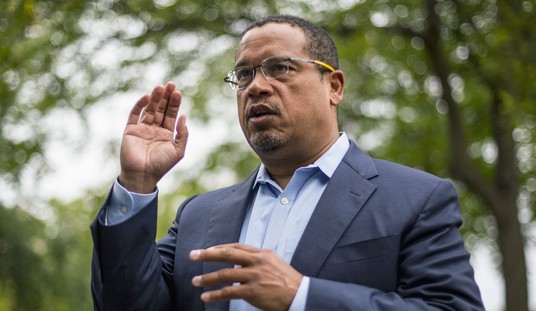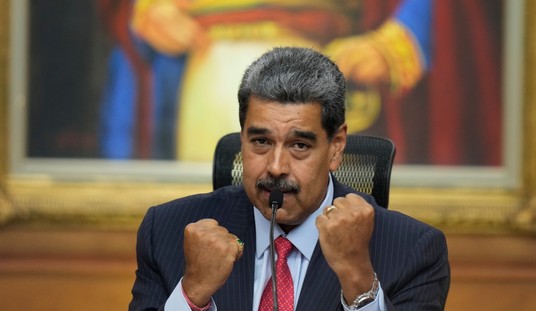Presumably Steve Mnuchin will aim this effort at schools with children young enough not to throw COVID-19 parties on their own. With two successive blockbuster jobs reports showing momentum toward economic recovery from the pandemic, the question will eventually arise as to what ceiling we might expect for further growth back to normal employment levels. That doesn’t just relate to the recent spikes in positive COVID-19 rates, but also to a major structural problem — closed schools.
Thanks to the structure of our economy, too many households are either two-income or single-parent in nature. If children can’t go to school, then one parent can’t go back to work, and that means reduced economic production and lower consumer spending. Today, the Treasury Secretary hinted at specific relief aimed at accelerating school reopenings to remove that economic barrier (via Townhall’s Reagan McCarthy):
Treasury Secretary Steven Mnuchin says that the next phase of stimulus relief could include providing funding to schools so they can safely re-open: “I think in most cases schools will be able to open safely. some school will need to spend money.” https://t.co/ORld8tlzXO pic.twitter.com/xWUcsJVMja
— ABC News (@ABC) July 2, 2020
Of all the potential targets for another round of stimulus, this one makes the most sense. There is no doubt that closed schools limits the options for workers in double-income or single-parent households. Thanks to the issues with this disease, extended family — especially grandparents or other older relatives — can’t provide any assistance. While children don’t necessarily tend to develop acute COVID-19 cases, they can pass them along to higher-risk adults.
That is, it makes sense to the extent that any further stimulus makes sense. We haven’t spent other monies already appropriated yet, Heritage research fellow Rachel Greszler argued, and the momentum on jobs shows that further stimulus isn’t needed. Congress should instead restructure its unemployment supports to disincentivize job refusals and speed the rehiring process up even further, Greszler concludes:
Two months of record jobs gains offer hope for recovery — the American economy is showing signs of getting back on track. Americans know federal support can’t sustain livelihoods indefinitely and have shown their willingness to return to work, restaurants, and stores.
Although the unemployment rate is still high, the significant turnaround shows that Congress should focus on fostering the recovery that’s already underway and resist the temptation to rush toward another massive stimulus package. Coupling employment opportunities and flexibility with temporary and targeted unemployment supports can help get Americans back to work and limit widespread economic damage.
Probably wise advice, but the ship has pretty much sailed on it already. Both Republicans and Democrats on Capitol Hill have called for more stimulus, albeit with different targets. At the White House, they’re already planning for another direct payment to taxpayers with Donald Trump’s enthusiastic backing. The only question is just how much to send, and to whom:
Asked by Fox Business if he supports “another round of direct payments for individuals” — a reference to the $1,200 stimulus payments — the president said: “I do. I support it. But it has to be done properly. And I support actually larger numbers than the Democrats. But it’s got to be done properly.”
Republicans have so far rejected Democratic lawmakers’ push to send out $2,000 per person a month to Americans during the pandemic.
In the next sentence, Trump appeared to highlight conservative concerns over the impact of higher unemployment insurance payments on discouraging Americans to return to the labor market. That made it unclear if the president was expressing support for another round of direct stimulus payments, or some other form of federal help for individual taxpayers.
A White House spokesman declined to clarify what the president meant on Wednesday.
“We had something where they wanted where it gave you a disincentive to work last time. And it was still money going to people and helping people, so I was all for that. But we want to create a very great incentive to work. So we’re working on that, and I’m sure we’ll all come together,” the president said, according to a transcript provided by Fox Business.
Trump did at times conflate direct payments with unemployment benefits, but there seems to be little doubt that he’s leaning in favor of the checks. If nothing else, Trump got to make them into a re-election message by putting his own name on each of them. There is still a debate as to whether the first stimulus payment got enough economic improvement for its cost, with many people simply socking the cash away in savings. As more people come back to work, that trend might accelerate with further direct stimulus payments, making them less and less effective at actual stimulus. Their electoral and political value, however, are beyond debate — so expect everyone to eventually line up behind one more round, at least.
Otherwise, the money might be better focused on classrooms. The biggest impact for economic growth will be to get children out of the house so parents can return to work, at least those parents who want or need to do so. It might be tricky to ensure that the money ends up being spent on classroom remodeling for COVID-19 mitigation instead of, say, pension-fund contributions or budget gaps, but Congress should be able to target the funding precisely enough to make it effective. That is, if that’s what their true motivation actually is.








